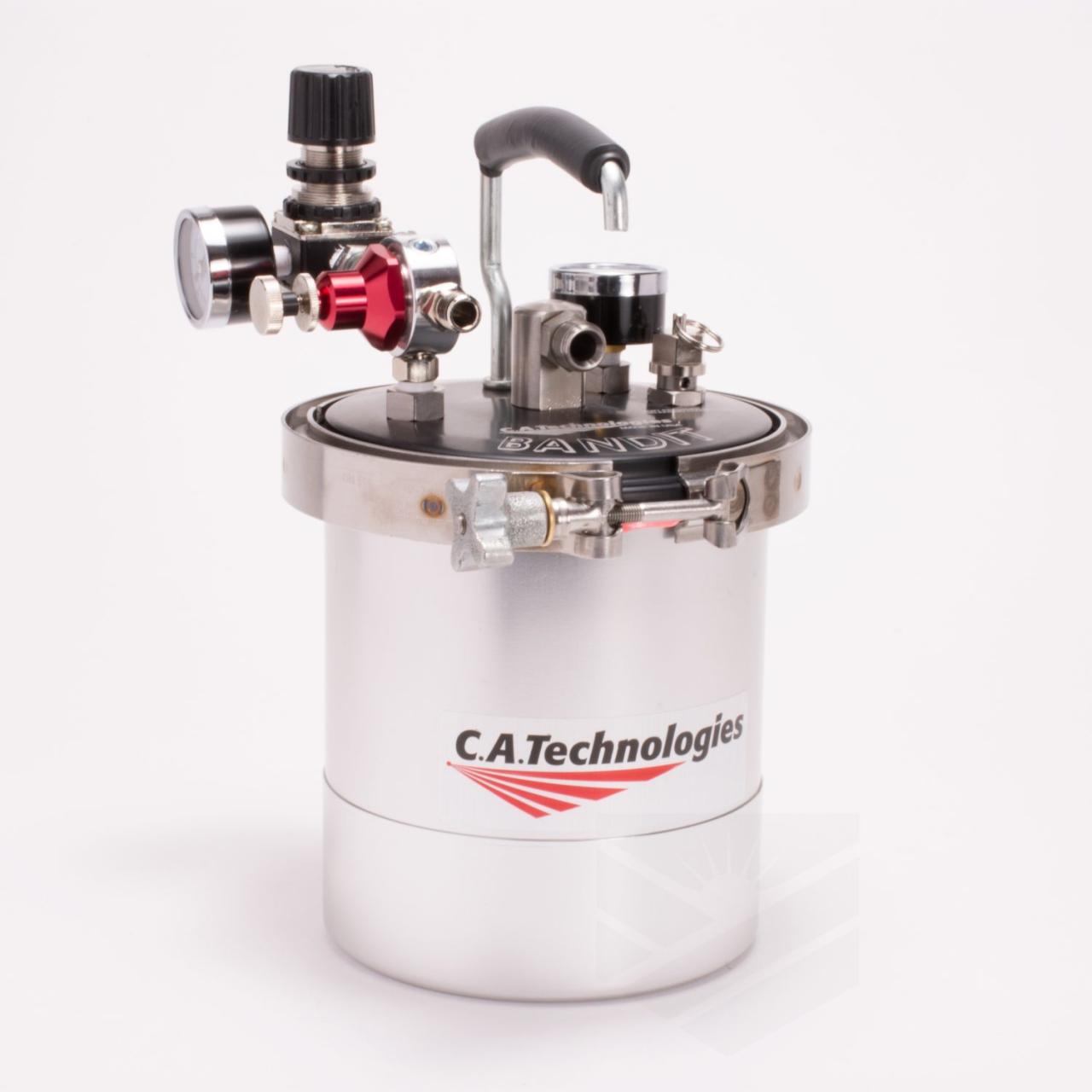Technology Integration Specialist: Bridging the Gap
Technology Integration Specialist – this role is at the heart of modern businesses, ensuring seamless integration of new technologies to enhance efficiency and drive growth. These specialists act as bridge […]

Technology Integration Specialist – this role is at the heart of modern businesses, ensuring seamless integration of new technologies to enhance efficiency and drive growth. These specialists act as bridge builders, connecting the technical world with the strategic needs of organizations.
From crafting detailed integration plans to navigating complex implementation processes, Technology Integration Specialists are the architects of a smoother, more efficient future. They are responsible for evaluating and selecting the right technologies, managing the implementation process, and training users to effectively utilize the new tools.
Role of a Technology Integration Specialist

A technology integration specialist plays a crucial role in bridging the gap between technology and business needs. They are responsible for ensuring that new technologies are effectively implemented, integrated, and utilized within an organization. Their expertise lies in understanding both technical aspects and business requirements, enabling them to create seamless solutions that enhance productivity and drive innovation.
Industries Where Technology Integration Specialists are in Demand
Technology integration specialists are in high demand across various industries, as organizations increasingly rely on technology to streamline operations and gain a competitive edge. Here are some examples:
- Healthcare: Hospitals and clinics need specialists to integrate electronic health records (EHRs), patient portals, and other healthcare IT systems. These integrations ensure efficient data sharing, improved patient care, and streamlined administrative processes.
- Finance: Financial institutions require specialists to integrate trading platforms, risk management systems, and customer relationship management (CRM) tools. This enables them to manage financial transactions, analyze data, and provide personalized financial services.
- Education: Schools and universities rely on specialists to integrate learning management systems (LMS), virtual classrooms, and other educational technologies. These integrations enhance teaching and learning experiences, facilitate collaboration, and improve student outcomes.
- Manufacturing: Manufacturing companies need specialists to integrate industrial automation systems, supply chain management software, and data analytics tools. These integrations optimize production processes, improve efficiency, and enhance product quality.
- Retail: Retail businesses require specialists to integrate point-of-sale (POS) systems, inventory management software, and customer loyalty programs. These integrations enhance customer experience, optimize inventory levels, and streamline sales operations.
Examples of Contributions to Organizational Success
Technology integration specialists contribute to organizational success in numerous ways:
- Improved Efficiency: By seamlessly integrating systems, specialists eliminate manual processes and data duplication, resulting in increased efficiency and reduced costs.
- Enhanced Collaboration: Integrating communication tools and platforms facilitates collaboration among teams, regardless of their physical location. This fosters innovation and improves decision-making.
- Data-Driven Insights: Integrating data analytics tools allows organizations to collect, analyze, and interpret data, enabling them to make informed decisions based on real-time insights.
- Enhanced Customer Experience: By integrating CRM systems and other customer-facing technologies, specialists can provide personalized experiences, improve customer satisfaction, and build stronger relationships.
- Increased Innovation: Technology integration specialists facilitate the adoption of new technologies, enabling organizations to stay ahead of the curve and develop innovative solutions.
Skills and Expertise
A technology integration specialist needs a blend of technical and soft skills to be successful. They need to understand the technical aspects of the systems they’re integrating, but also be able to communicate effectively with stakeholders and work collaboratively with teams.
Technical Skills
Technical skills are crucial for a technology integration specialist. They need to understand the various technologies they’re working with and be able to troubleshoot and solve problems.
- Programming Languages: Proficiency in programming languages like Python, Java, or C++ is essential for developing custom integrations and automating tasks.
- Databases: Understanding databases like SQL and NoSQL is crucial for managing data flow and ensuring data integrity during integration.
- API Integration: Experience with APIs is vital for connecting different systems and enabling seamless data exchange.
- Cloud Computing: Knowledge of cloud platforms like AWS, Azure, or Google Cloud is important for deploying and managing integrated solutions in the cloud.
- Networking: Understanding networking concepts like TCP/IP and network security is essential for troubleshooting connectivity issues and ensuring data security during integration.
- Operating Systems: Familiarity with different operating systems like Windows, Linux, and macOS is helpful for configuring and deploying integrated solutions across various platforms.
Soft Skills
Soft skills are equally important for a technology integration specialist. They enable effective communication, collaboration, and problem-solving in a complex technical environment.
- Communication: Strong communication skills are essential for explaining complex technical concepts to non-technical stakeholders, gathering requirements, and providing clear updates on project progress.
- Collaboration: The ability to work effectively with cross-functional teams, including developers, business analysts, and project managers, is crucial for successful integration projects.
- Problem-Solving: Technology integration specialists need to be analytical and resourceful to identify and solve technical challenges that arise during integration projects.
- Adaptability: The technology landscape is constantly evolving, so it’s important to be adaptable and willing to learn new technologies and approaches.
Industry-Specific Knowledge and Certifications
Industry-specific knowledge and certifications can enhance a technology integration specialist’s credibility and marketability. These demonstrate a deep understanding of the industry and its specific needs.
- Industry Certifications: Certifications like AWS Certified Solutions Architect, Azure Solutions Architect Expert, or Google Cloud Professional Cloud Architect demonstrate expertise in cloud platforms and their integration capabilities.
- Domain Expertise: Understanding the specific industry and its business processes is essential for tailoring integration solutions to meet unique requirements. For example, a specialist working in healthcare needs to understand HIPAA compliance, while someone in finance needs to understand regulatory requirements for data security.
Technology Integration Process
The technology integration process involves a structured approach to seamlessly incorporating new technologies into an organization’s operations. This process ensures that the technology is effectively implemented, adopted, and optimized for maximum benefit.
Steps in Technology Integration
A well-defined technology integration process typically involves the following steps:
- Needs Assessment: The process begins with identifying the organization’s specific needs and goals. This step involves understanding the existing technology infrastructure, identifying pain points, and determining how new technology can address these challenges and support strategic objectives.
- Technology Selection: Based on the needs assessment, potential technologies are evaluated and shortlisted. This step involves researching and comparing different solutions, considering factors like cost, compatibility, security, scalability, and ease of implementation.
- Planning and Design: A comprehensive plan is developed outlining the integration strategy, timelines, resource allocation, and potential risks. This step involves designing the technical architecture, defining data migration processes, and ensuring seamless integration with existing systems.
- Implementation: The selected technology is implemented, configured, and tested. This step involves installing software, configuring hardware, migrating data, and training users on the new system.
- Testing and Validation: The integrated system is rigorously tested to ensure functionality, performance, and security. This step involves conducting user acceptance testing, load testing, and security audits to identify and resolve any issues.
- Deployment and Rollout: The technology is deployed to the organization’s users, with appropriate support and training provided. This step involves communicating the benefits of the new technology, addressing user concerns, and providing ongoing assistance.
- Monitoring and Evaluation: The integrated technology is continuously monitored to assess its performance, identify areas for improvement, and measure its impact on the organization’s goals. This step involves tracking key metrics, collecting user feedback, and making adjustments to optimize the technology’s effectiveness.
Phases of Technology Integration
The technology integration process can be further broken down into distinct phases:
| Phase | Description | Activities |
|---|---|---|
| Planning | This phase involves defining the scope of the integration project, identifying key stakeholders, and establishing clear goals and objectives. | Needs assessment, technology selection, budget allocation, risk assessment, communication plan development, stakeholder engagement. |
| Implementation | This phase involves acquiring and configuring the technology, developing training materials, and deploying the system to users. | Hardware and software installation, data migration, user training, system testing, go-live planning, technical support. |
| Evaluation | This phase involves assessing the effectiveness of the integrated technology, identifying areas for improvement, and measuring the impact on the organization’s goals. | Performance monitoring, user feedback collection, data analysis, impact assessment, ongoing optimization. |
Tools and Methodologies
Several tools and methodologies are commonly used in the technology integration process, including:
- Project Management Software: Tools like Jira, Asana, and Microsoft Project help manage tasks, timelines, and resources effectively.
- Data Migration Tools: Tools like SQL Server Integration Services (SSIS) and Informatica PowerCenter facilitate efficient data transfer between systems.
- Application Programming Interfaces (APIs): APIs enable seamless communication and data exchange between different systems.
- Agile Development Methodologies: Agile approaches like Scrum and Kanban promote iterative development, flexibility, and continuous improvement.
- Change Management Strategies: Approaches like Lewin’s Change Management Model help navigate organizational change effectively, minimizing resistance and ensuring successful adoption.
Challenges and Opportunities
Technology integration projects, while promising significant improvements, often encounter various challenges that can impact their success. These challenges arise from factors such as the complexity of systems, organizational resistance to change, and the need for careful planning and execution. However, the potential benefits and opportunities that technology integration can bring to organizations are substantial, making it a worthwhile endeavor despite the challenges.
Common Challenges, Technology integration specialist
- Complexity of Systems: Integrating different technologies and systems can be complex, requiring specialized knowledge and expertise. This complexity can lead to compatibility issues, data inconsistencies, and difficulties in managing the integrated environment.
- Organizational Resistance to Change: Employees may resist new technologies due to concerns about job security, learning curves, or disruptions to existing workflows. Overcoming this resistance requires effective communication, training, and change management strategies.
- Data Security and Privacy: Integrating technologies often involves sharing data across systems, which raises concerns about data security and privacy. Implementing robust security measures and adhering to data privacy regulations is crucial.
- Cost and Time Overruns: Technology integration projects can be expensive and time-consuming. Poor planning, scope creep, and unforeseen technical issues can contribute to cost and time overruns.
- Lack of Clear Goals and Objectives: Without well-defined goals and objectives, technology integration projects can lack direction and fail to deliver the desired outcomes. Clear objectives provide a roadmap for success.
Potential Benefits and Opportunities
- Improved Efficiency and Productivity: Technology integration can streamline processes, automate tasks, and eliminate redundant work, leading to improved efficiency and productivity.
- Enhanced Collaboration and Communication: Integrating communication and collaboration tools can facilitate better information sharing, teamwork, and decision-making.
- Data-Driven Insights: Integration enables the consolidation of data from different sources, providing organizations with a holistic view of their operations and enabling data-driven insights for better decision-making.
- New Business Models and Opportunities: Technology integration can unlock new business models, products, and services, creating opportunities for growth and innovation.
- Competitive Advantage: Organizations that successfully integrate technologies can gain a competitive advantage by improving their operations, customer experience, and product offerings.
Risks and Rewards of Different Approaches
| Technology Integration Approach | Risks | Rewards |
|---|---|---|
| Best-of-Breed |
|
|
| Single Vendor |
|
|
| Hybrid |
|
|
Future Trends in Technology Integration: Technology Integration Specialist

The landscape of technology integration is constantly evolving, driven by rapid advancements in fields like artificial intelligence (AI) and cloud computing. These trends are reshaping how organizations approach technology integration, creating both challenges and opportunities for technology integration specialists. Understanding these trends and adapting to their implications is crucial for success in this dynamic field.
Impact of Artificial Intelligence on Technology Integration
AI is rapidly transforming various aspects of technology integration, from automating tasks to optimizing processes. AI-powered tools can analyze vast amounts of data, identify patterns, and make predictions, enabling more efficient and effective integration efforts.
AI’s impact on technology integration can be observed in several key areas:
- Automated Integration: AI-powered tools can automate repetitive tasks involved in technology integration, such as data mapping, code generation, and configuration. This frees up technology integration specialists to focus on more strategic and complex aspects of the process.
- Intelligent Process Automation (IPA): AI can be used to automate complex processes involving multiple systems and technologies. This includes tasks like data migration, system upgrades, and application deployments.
- Predictive Analytics: AI can analyze historical data and identify patterns to predict potential integration challenges and bottlenecks. This allows technology integration specialists to proactively address issues and ensure seamless integration.
The Role of Cloud Computing in Technology Integration
Cloud computing has revolutionized how organizations access and utilize technology resources. It provides a flexible and scalable platform for integrating various applications and services.
Cloud computing significantly impacts technology integration in the following ways:
- Simplified Integration: Cloud platforms often provide pre-built integrations with popular applications and services, simplifying the integration process for technology integration specialists.
- Scalability and Flexibility: Cloud computing allows organizations to easily scale their infrastructure up or down based on their needs, making it easier to accommodate changes in technology integration requirements.
- Cost-Effectiveness: Cloud computing can be more cost-effective than traditional on-premises solutions, especially for organizations with fluctuating needs. This allows technology integration specialists to optimize integration costs and deliver value to their organizations.
Adapting to Future Challenges and Opportunities
As AI and cloud computing continue to evolve, technology integration specialists must adapt to remain relevant and successful. Here are some key areas where they can focus:
- Develop AI Skills: Technology integration specialists should acquire knowledge and skills in AI, including machine learning, deep learning, and natural language processing. This will enable them to leverage AI-powered tools and solutions for integration projects.
- Embrace Cloud Technologies: Familiarity with cloud platforms, services, and integration methodologies is essential. Technology integration specialists should gain expertise in cloud computing platforms like AWS, Azure, and Google Cloud.
- Focus on Data Management: With the increasing volume of data generated by AI and cloud applications, technology integration specialists must understand data management principles and practices. This includes data security, governance, and privacy.
- Develop Soft Skills: Technology integration specialists must possess strong communication, collaboration, and problem-solving skills to effectively work with stakeholders and navigate complex integration projects.
Final Review
In a world increasingly driven by technology, the role of a Technology Integration Specialist is vital. These professionals are the key to unlocking the potential of new technologies, helping organizations leverage their power to gain a competitive edge. By combining technical expertise with strategic thinking, Technology Integration Specialists ensure that technology serves as a powerful tool for innovation and progress.
Technology integration specialists play a crucial role in bridging the gap between technology and business needs. Understanding how to leverage demand technology is essential for them to optimize processes, enhance efficiency, and ultimately drive growth. By staying abreast of the latest trends in demand technology, these specialists can ensure that their organizations are equipped to navigate the ever-changing landscape of the digital world.







